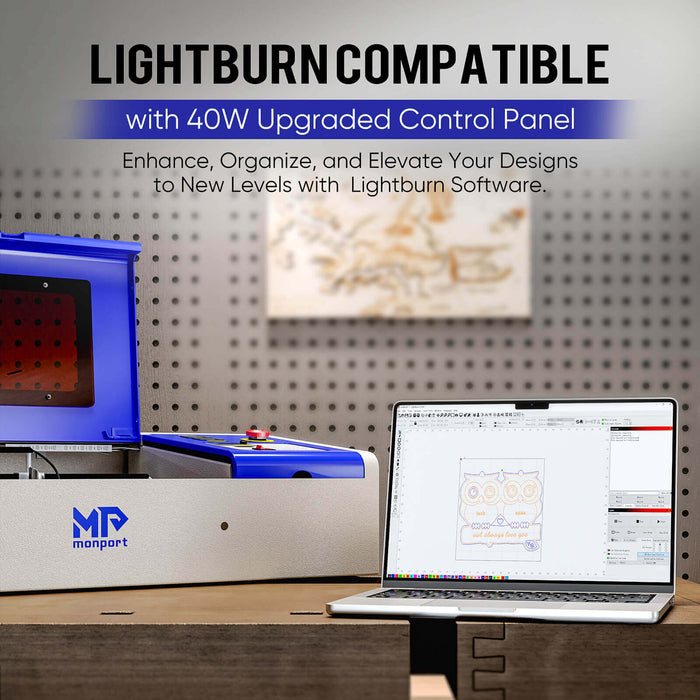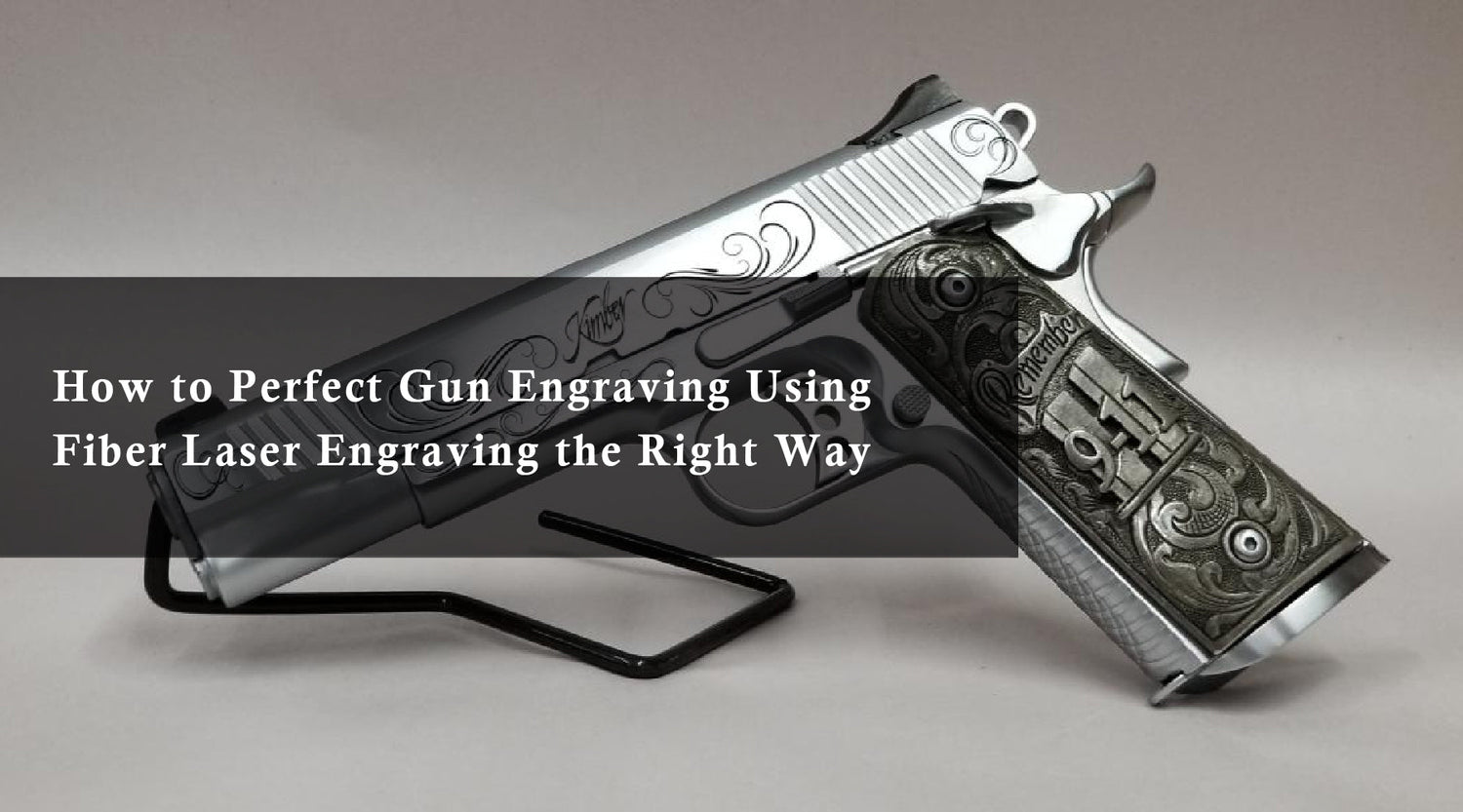Laser cutting rubber with a desktop CO2 laser offers unparalleled precision and versatility, making it an ideal choice for hobbyists, small businesses, and manufacturers alike. Whether you're creating custom stamps, gaskets, or intricate designs, a desktop CO2 laser provides the capabilities needed to bring your projects to life. In this comprehensive guide, we'll explore everything you need to know about laser cutting rubber with a desktop CO2 laser.
Factors for Laser Cutting Rubber Using Desktop CO2 Laser Machine
Understanding the Basics of Laser Cutting Rubber:
Laser cutting is a non-contact process that utilizes a high-powered laser beam to precisely cut through materials. When it comes to cutting rubber, a CO2 laser is well-suited for the task due to its ability to efficiently vaporize and melt the material. Rubber is typically cut using vector-based designs, allowing for intricate shapes and precise cuts with minimal material waste. Engravings can also be created with the same level of precision, offering a variety of applications for detailed designs.
Selecting the Right Desktop CO2 Laser:
Before diving into laser cutting rubber, it's essential to choose the right desktop CO2 laser for your needs. Consider factors such as cutting bed size, laser power, and software compatibility. Opt for a machine with sufficient power and precision to handle rubber materials effectively. Additionally, ensure that the laser cutter is equipped with safety features such as a protective enclosure and laser beam containment to prevent accidents. Engravings precision also depends on these factors to achieve high-quality results.
Monport's 40W Pro Lightburn-Supported (12" X 8") CO2 Laser Engraver & Cutter with Air Assist has all the qualities you need for a Desktop CO2 laser engraver.
Monport 40W Pro Lightburn-Supported (12" X 8") CO2 Laser Engraver & Cutter with Air Assist - 40W Pro
Key Features of Our Desktop Engraving Machine
Exceptional Speed and Precision
- Engraves at up to 350mm/s with an accuracy of 0.01 inches on various materials like wood, glass, acrylic, and leather.
Lightburn Compatibility
- Upgraded control board ensures seamless compatibility with Lightburn software, offering limitless design possibilities.
Built-in Air Assist
- Enhances engraving precision and reduces carbonization effects on wood, delivering flawless results.
Machine Component Upgrade
- Features a 19mm Adjustable Laser Head, Professional-Grade Metal Rails, and a top-tier mirror holder for a refined engraving experience.
Red Dot Guidance
- Red Dot Guidance feature mounted on the laser head provides unparalleled precision when aligning cuts and engravings.
Innovative Dual Work Bed
- Dual work bed offers two options for versatility.
- Stabilizer clamp secures irregularly shaped objects, while the vented level board caters to regular shapes.
Built-in Ventilation
- Integrated fan boosts laser performance, improves ventilation, and reduces noise.
- Exhaust port ensures a safe work environment by venting fumes outdoors.
| Manchine Model | Monport 40W Lighhtburn-ready |
|---|---|
| Working Area | 8" x 12" |
| Machine Dimension | 31.4" x 19.7" x 10" |
| Exhaust Port Diameter | 4'' |
| Output Power | 40W |
| Compatible Operating Systems | MacOS,Windows XP/7/8/10/11 |
| Max.Process Speed | 350mm/s |
| Product Weight | 48.5 lbs. ( 22 kg ) |
| Material Capability | Wood, glass, acrylic, fabric, leather, paper, cardboard, rubber. |
| Focal Lens Diameter | 12mm |
| Mirror Diameter | 20mm |
| Expected service Life of Laser Tube | 1500-2000 hours |
| Laser Frequency | 20-100 kHz |
For Laser cutting rubber, the Monport 40W Desktop CO2 Laser Engraver meets your engraving needs. Visit Monport today for a vast selection of laser engravers and machine guides.
Preparing Your Rubber Material:

Proper preparation of the rubber material is crucial for achieving clean and accurate cuts. Start by selecting high-quality rubber sheets or blocks that are compatible with laser cutting. Ensure that the material is flat, clean, and free from any contaminants that could affect the cutting process. If necessary, secure the rubber material to the cutting bed using masking tape or a vacuum table to prevent shifting during cutting. Engravings of the material before cutting can also help achieve more detailed designs.
Creating Your Design:

Design your cutting patterns using vector-based design software such as Adobe Illustrator, CorelDRAW, or Inkscape. Vector designs allow for precise control over cutting paths and intricate details. Experiment with different shapes, sizes, and configurations to achieve the desired result. Remember to account for the kerf width (the width of the laser beam) when creating your designs to ensure accurate cuts. Additionally, engravings of designs can add fine details that enhance the final product.
Setting Laser Parameters:
Once your design is ready, it's time to configure the laser cutting parameters. Adjust settings such as laser power, cutting speed, and frequency based on the thickness and type of rubber material being used. Conduct test cuts on scrap material to fine-tune the parameters and achieve optimal cutting results. Pay attention to factors such as cutting depth, edge quality, and overall cutting efficiency. Make sure to adjust the settings to ensure that both cutting and engravings are precise.
Executing the Cutting Process:

With your design and laser parameters set, it's time to execute the cutting process. Load your design file into the laser cutter's software and position it on the cutting bed. Double-check the alignment and focus of the laser beam to ensure accuracy. Start the cutting process and monitor the machine closely throughout the operation. Once the cutting is complete, carefully remove the cut pieces from the cutting bed and inspect them for quality.
Finishing and Post-Processing:

After cutting, you may need to perform additional finishing and post-processing steps depending on the desired outcome. Trim any excess material and remove any masking tape or residue from the cut pieces. If necessary, clean the cut edges with a solvent or sandpaper to smooth out rough surfaces. Finally, assemble or package the cut rubber pieces as needed for use or distribution.
Safety Considerations:
When laser cutting rubber, it's essential to prioritize safety at all times. Ensure that the laser cutter is installed and operated in a well-ventilated area to prevent the buildup of fumes and emissions. Wear appropriate personal protective equipment (PPE), including safety glasses and gloves, to protect against laser radiation and potential hazards. Familiarize yourself with the operation of the laser cutter and adhere to all safety guidelines provided by the manufacturer.
Conclusion
Laser cutting rubber with a desktop CO2 laser opens up a world of creative possibilities for hobbyists, artisans, and businesses alike. By selecting the right equipment, preparing your materials properly, and mastering the cutting process, you can achieve precise and intricate cuts with ease. With the tips and techniques outlined in this guide, you'll be well-equipped to unleash your creativity and bring your rubber cutting projects to life with precision and efficiency.










